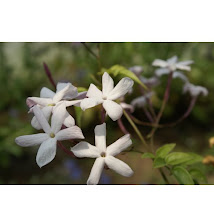
by Syamarani dasi
Srila A.C. Bhaktivedanta Svami Prabhupada, an intimate friend of Srila Narayana Maharaja, gives the following short description of the scene in his book Krsna: the Supreme Personality of Godhead:
With the arrival of the beautiful autumn season, the waters in the lakes and rivers became as clear as crystal and filled with fragrant lotus flowers, and breezes blew very pleasantly. At that time, Krsna entered the forest of Vrndavana with the cows and cowherd boys. Krsna was very much pleased with the atmosphere of the forest, where flowers bloomed and bees and drones hummed very jubilantly. While the birds, trees and plants were all looking very happy, Krsna, tending the cows and accompanied by Sri Balarama and the cowherd boys, began to vibrate His transcendental flute. After hearing the vibration of the flute of Krsna, the gopis in Vrndavana remembered Him and began to talk amongst themselves about how nicely Krsna was playing His flute. When the gopis were describing the sweet vibration of Krsna’s flute, they also remembered their pastimes with Him; thus their minds became disturbed, and they were unable to describe completely the beautiful vibrations. While discussing the transcendental vibration, they remembered also how Krsna dressed, decorated with a peacock feather on His head, just like a dancing actor, and with blue flowers pushed over His ear. His garment glowed yellow-gold, and He was garlanded with a vaijayanti necklace. Dressed in such an attractive way, Krsna filled up the holes of His flute with the nectar emanating from His lips. So they remembered Him, entering the forest of Vrndavana, which is always glorified by the footprints of Krsna and His companions.
Because Srila Prabhupada is also such a realized soul, we have an opportunity to one day enter that divine realm just by reading this description.








![[mostbeautiful.jpg]](https://blogger.googleusercontent.com/img/b/R29vZ2xl/AVvXsEgkazBOkQm66tR5Ck0AZHAhEU_wFe7UyZdtrYIN0Gx6GevVDK3bs8kyGJURcXHbkDlx0JvLbuAalccerfYlgD6GWrylIyHenX21BKY7zHXYn9qTJbUqEFS_4waO5RMxgRxcTlvmmaDsvo1j/s1600/mostbeautiful.jpg)






![[10:17:31] ramadasi: Syamarani didi\](https://blogger.googleusercontent.com/img/b/R29vZ2xl/AVvXsEgC98aAi-2hLkPtTfGx06zAlj3sxGKRmwvEOv_c1_-H9146muvOPaStbueTM15P04rgSD827WGCTm1mqDzROfAfkdagnkORVpUXYzqUwu139ls6uqFl1Ca-Y7_nK-j0qPq7vgIXRbkS9vE/s229/sri-upadesamrta.jpg)







